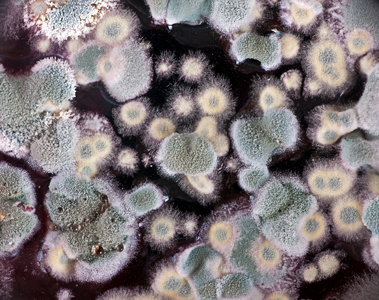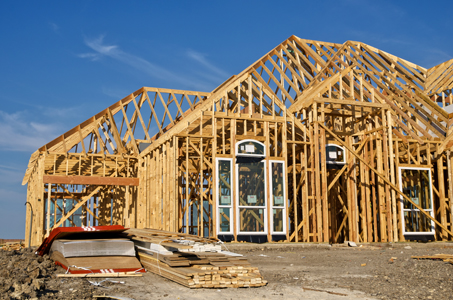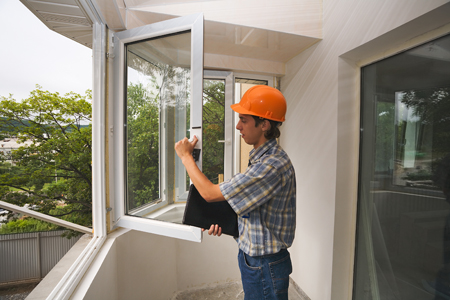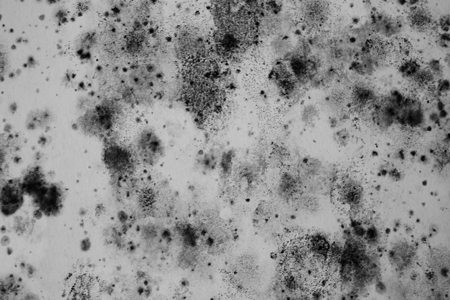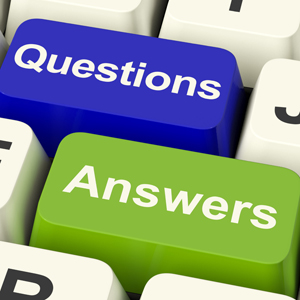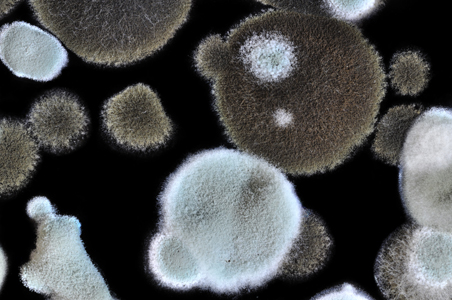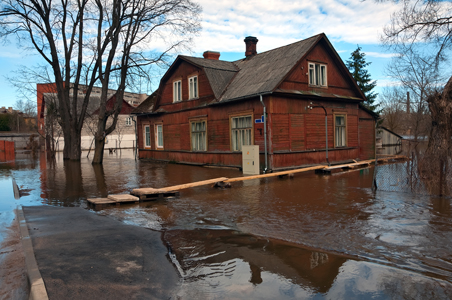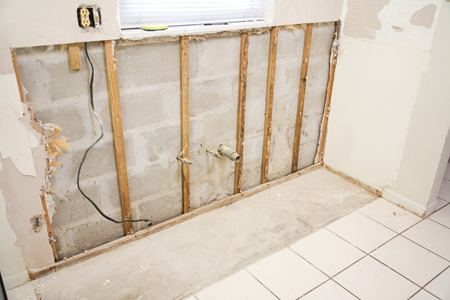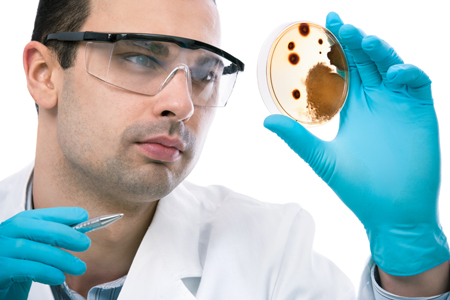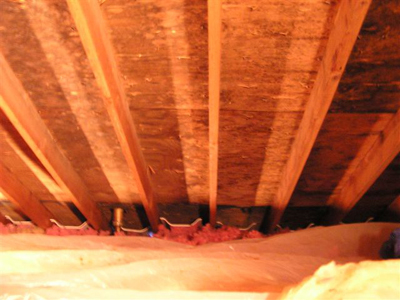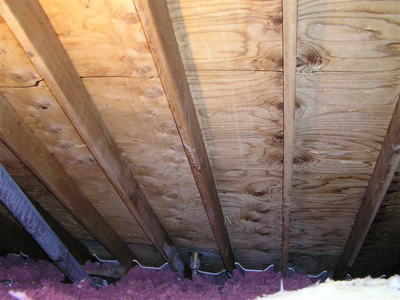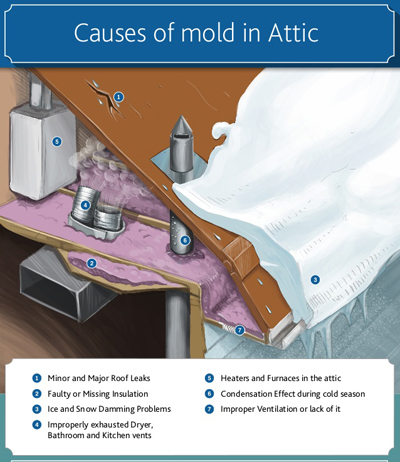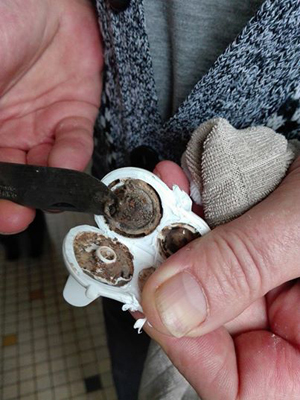
by Eric Brown | Apr 22, 2016 | Beware Of Mold When Buying A Home, Health, Indoor Air Quality, Mold Facts, Mold Information, Mold Inspection, Mold Remediation, Mold Removal, Questions and Answers
How Reliable Is Your Home Inspection?
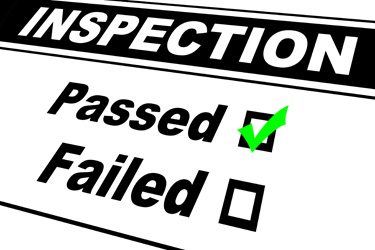
How Reliable Is Your Home Inspection?
It’s that time of year when the real estate market begins heating up in Atlanta, Georgia. More houses on the market to fill the need of anxious home buyers.
Many homes built since the 1970s are showing signs of mold growth because of the oil crisis that occurred. This event encouraged home builders to make the homes more air-tight, meaning there were less drafts that brought outdoor air into the home.
This trend to energy efficiency has led to mold problems because mold needs water and moisture to thrive and the air-tight environments trap moisture in.
The upside is energy efficiency has saved you costs on utilities.
The downside, indoor air quality has suffered because of mold growth! This has led to higher incidences of mold related illness and reduced home values because mold literally feeds on the home, impacting its structural integrity.
The major problem with mold is that it can be hidden. You could have mold in your home and not even know that you have it. Sometimes the only clue that you have mold is family members may be getting sick more often. The problem with hidden mold is the mold spores are not visible and because of modern day HVAC systems, the air borne spores will continue to be circulated in your home, thereby spreading the spores in every room of your home.
As a home seller or home buyer, you need to be aware of the potential concerns caused by mold.
If you are selling your home and know that you have mold, had past water leaks that have been fixed and/or experienced a major water event like a flood or sewage backup, you should disclose this information to the realtor listing your home to avoid potential litigation.
In a perfect world, the home seller will disclose this information, but let’s face it, we are not living in a perfect world.
When a home seller wants to sell their home, their objective is to list the property and get the highest price for their home. This is the reason they get the help of a realtor.
The only way home buyers can protect themselves is to take matters into their own hands and make sure that the home they are buying does not have mold or moisture concerns that could lead to mold.
Most home buyers rely on the expertise of their home inspector, but as this article explains, can you really just rely on the opinion of your home inspector? Are they experts in mold? Most home inspectors are not and they rely on the goodwill of referrals from realtors, so there could be an inherent conflict of interest.
This article explains why you should submit an offer to purchase, subject to a home inspection AND a mold inspection. It also reveals the top 3 reasons to have a mold inspection before buying a home.
What Is Mold?

What Is Mold?
A fungus, some molds are visible, in various colors–black, white, green, gray–and will likely give off a smell.
Mold is nature’s recycler. It is everywhere because it has an important purpose in our eco-system: to breakdown and eat dead organic matter.
Mold needs three important ingredients to grow.
First, a food source, dead organic material like wood, paper, carpet, etc.
Second, the ideal temperature of 41 degrees fahrenheit up to 100 degrees fahrenheit.
Third, and most importantly, moisture. Without moisture, mold will not grow.
Why Is Mold A Problem?
Aside from the structural and health concerns (asthma and chronic sinusitis for example) that mold poses, the other major concern is that mold is often out of sight and difficult to see.
Common reasons and areas of the home that mold can be found include:
- Around leaking pipes, windows, or roofs. Water provides mold spores the moisture they need to grow.
- Basements or other areas of the home that have flooded and were not dried properly.
- Common with new construction is the practice of tightly sealing the building, which can trap moisture leading to mold growth.
- Poorly ventilated homes that does not enable outside air to circulate in the home.
Some other clues that there could be mold in the home include the following:
- Water stains on the walls and ceilings.
- Musty odors in areas of the home like the bathroom, kitchen, laundry room, and basement, where leaky pipes are commonly found.
- Standing water in the basement.
Be particularly careful if you are looking at purchasing a foreclosed home. These homes are susceptible to mold growth because cost saving measures by the banks usually means they will shut down the HVAC system, which is a major concern because it results in high humidity levels and ultimately mold growth.
Recently renovated homes are another concern because improperly trained contractors or the home seller could have found mold, but not addressed it properly.
A Brand New Home Could Have Mold!

A Brand New Home Could Have Mold!
If you are buying a new home, you may think that mold will not be an issue either. New does not necessarily mean mold free for several reasons:
- The trend towards building energy efficient homes may save money on heating and cooling. The negative, however, is that by building homes so that they are air tight could result in a lack of proper ventilation, leading to mold growth.
- Simple construction errors like installing the vapor barrier when there is moisture present. This error will lead to mold growth because the moisture is trapped.
- The time of year the home was built could also be a factor. If the home was built when there was lots of rain and the foundation was not allowed to completely dry before installing the insulation and vapor barrier, then moisture could be trapped behind the walls.
- Cost saving construction measures is another factor. Home builders are using more Orient Strand Board (OSB) and less plywood and timber which provided some resistance to mold because these materials are semi-porous. In contrast, OSB and particle board are porous and susceptible to mold growth.
Top 3 Reasons To Have a Mold Inspection Before Buying a Home
Aside from the peace of mind that mold inspection offers, here are the top three reasons why you should consider a mold inspection when you buy a home:
1. Mold Remediation Can Be Costly!
2. Real Estate Agents Are Not Mold Experts!
3. Home Inspectors Are Not Mold Experts!
#1 Mold Remediation Can Be Costly!

#1 Mold Remediation Can Be Costly!
As stated in an earlier article, the cost of mold remediation will depend on three key factors:
1. How much of the area is infected with mold?
2. What kind of materials are infected?
3. How easy is it to access the mold?
On average, the typical household mold removal project will range from $2,000 to $6,000, but can be as high as $30,000 or more depending on the extent of contamination.
Considering the potential cost of mold removal, you are much better off finding out if there is a potential mold problem before purchasing the home. A mold inspection will provide you with the data you require to make an informed decision.
Best case scenario, no mold is found. Worst case scenario, mold is found, but then if you still have your heart set on the home, at least you now have some negotiating power to bring down the price so the home can be properly remediated before you move in.
#2 Real Estate Agents Are Not Mold Experts!

#2 Real Estate Agents Are Not Mold Experts!
The goal of every real estate professional is to list and sell homes. They will only make their commission when the property sells, so they have significant motivation to do what it takes to facilitate the sale. Their end goal is pretty defined: sell the home and collect the commission.
In addition, real estate agents are sales and marketing professionals, they are not construction experts and likely know very little about mold, where it could be found, and why it is a problem.
When listing a home, the agent is relying on the honesty and integrity of the seller who fills in a property disclosure form. If the seller fails to disclose a mold problem that has not been fixed and is trying to hide the mold problem by painting over it or trying to hide it, how is the agent going to know. How will you know?
Buyers should pay close attention to the property disclosure form because it could provide you with clues of potential moisture problems that could cause mold. Some clues include YES answers to these types of questions:
- Is the property in a flood hazard area or an inland wetlands area?
- Does the home have basement water, seepage, or dampness issues?
- Has the home had roof leaks?
- Does the home have any rot and water damage problems?
- Does the home have any water drainage problems?
- Does the home have any sump pump problems?
#3 Home Inspectors Are Not Mold Experts!

#3 Home Inspectors Are Not Mold Experts!
Mold sickness is considered a hidden epidemic for two key reasons. First, most physicians are not trained to identify or treat mold illness. Second, most homes have mold, but the owners do not realize they have mold because it is hidden.
Since some people get sick from mold and other’s do not, a family could have been living in a moldy home and never experienced any major health concerns. In short, a seller of a home could have mold and not know because mold can be hidden underneath carpet, a new paint job, baseboards, behind walls, above ceiling, etc.
Taking this into consideration, when you hire a home inspector, their primary concern is not to identify if the home has mold. Rather, they are inspecting the overall structural integrity of the home, the roof, wiring, bathrooms, plumbing, etc.
A home inspector may point out water stains or moisture concerns in areas of the home, advise you that your basement has an odor, identify water seepage or a leaky roof, but they will not tell you if you have mold, what type of mold you have, and how extensive the mold problem is.
As a final note, like many business owners, home inspectors rely on referrals. Not surprisingly, one of the biggest sources of referrals tends to be real estate agents, whose primary objective is to sell property. Mold concerns present challenges to home sellers and their agents. Could there be a potential conflict of interest?
Mold Inspections Are Important!
The process of buying a home is an exciting process. You have big plans for your new home! You are looking forward to the future in your dream home to raise your family.
But in all the excitement, many home buyers forget about the future problems that mold and past moisture issues could have caused. This fact is ignored because many home buyers think a home inspection is a enough to protect them from future and costly repair problems. This is the #1 mistake home buyers make; home inspectors are not mold experts!
The worst case scenario is you move your family and all your possessions into your new home and eventually discover mold. Now what? You can ignore the problem which could cause future health and structural concerns for your property or you make the financial decision to deal with your mold problem.
Both options can be costly. Ignoring the problem will reduce your property value as the mold eats away at your home, not to mention the potential health issues. Addressing the mold concern can also be costly because proper remediation needs to be done by professionals.
Likely, the last concern you have when you are purchasing a home is the potential problems that mold could cause. Once you find your dream home, you want to submit your offer and close the deal.
However, I caution against being too hasty. In addition to hiring a reputable home inspector, seriously consider the services of a mold inspector.
Mold inspectors are trained to not only identify the moisture issue causing the mold but will also provide you with information on what type of mold is growing in your home and how extensive the problem is.
As mentioned earlier, the best case scenario is that no mold is found in your home.
However, if the mold inspector does find a mold problem it is better to be aware of the problem so that you can adjust your offer, subject to mold removal by the seller along with proper clearance letters. If the seller does not want to cover the cost of the removal, then at least you can factor in the cost of the mold removal into the purchase price.
Bottom line, it is better to be safe and informed, then sorry. The relative cost of a mold inspection is minor compared to the overall investment into the home and the potential costly headaches you will face if you have to pay for mold removal in the future.
Questions? We are mold inspection, detection, and removal experts. Call us, 678-697-6267, or contact us via e-mail. We look forward to serving you! 🙂

by Eric Brown | Apr 15, 2016 | Air Conditioning, Attic Mold, Basement Mold, Beware Of Mold When Buying A Home, Bleach and Mold, Can Black Mold Poison You?, Can Mold Kill?, Christmas Tree Mold, Chronic Inflammatory Response Syndrome (CIRS), Crawlspace Mold, Dead Mold Spores, Flood Clean Up, Health, How Toxic Is Mold?, Indoor Air Quality, Killing Mold, Mold and Asthma, Mold and Depression, Mold and Infants, Mold and Multiple Sclerosis, Mold and Parkinson's Disease, Mold and Pregnant Women, Mold and Sids, Mold and Sinusitis, Mold Facts, Mold In Apartment, Mold In The Bible, Mold Information, Mold Inspection, Mold Remediation, Mold Removal, Mold Removal Cost, Mold Risk During Renovation, Mold Sensitized Success Story, Questions and Answers, Sewer Backup, Sippy Cup Mold, Stachybotrys Black Mold, Top 15 Mold Prevention Tips, Toxic Mold, Water Damage Restoration
The Ultimate Mold Education Resource

The Ultimate Mold Education Resource
The goal of Mold B Gone is to educate our customers about mold. We strongly believe that an educated and informed consumer can make better decisions when they have concerns about mold.
Included in this article are 36 links to articles that will help you learn about mold.
Please bookmark this page because we will update it with new articles as they are researched and published.
If you have questions about mold removal, crawl space mold removal and encapsulation, other services we offer, and/or our 1 year up to 25 year guarantee, call us, 678-697-6267, or send us an e-mail. We look forward to serving you. 🙂
Mold Facts and Information (7 Articles)

Mold Facts and Information (7 Articles)
Priests were the equivalent of today’s mold inspectors. This article lists the three passages cited in Leviticus. Learn more!
Mold Fact 1: The Key Ingredient Mold Needs To Thrive Is Moisture. There are 9 more mold facts explained in this article. What do you think they are?
Top 4 Reasons Mold Grows In Your Attic! The purpose of this article is to explain why mold grows in your attic and prevention tips.
Top 3 Reasons Your Crawlspace Has High Humidity. This article explains why your crawlspace is humid, why this leads to mold and how you can fix the problem!
Steps Residents Can Take If They Have Mold In Their Apartment! This article explains what you can do if you find mold in your apartment. Learn more!
Top 10 Reasons Mold Is Scary!
Here are the top 10 reasons we believe that mold is scary. Enjoy!
This article provides you with information to help you determine if you have a mold problem and explains what you should and should not do if you do find mold.
Black Mold (2 Articles)

Black Mold (2 Articles)
Recently a news article featured a woman who believes that she was poisoned by toxic black stachybotrys mold. This article explores this topic further!
Stachybotrys is considered the king of molds because exposure to this toxic black mold causes 15 serious health conditions. Learn more!
Mold and Health (13 Articles)

Mold and Health (13 Articles)
Wondering if you are sensitive to mold? This article explains how to determine if you are mold sensitized, seeking treatment, and the next two steps to health!
This article explains why mold can be toxic, listing 10 specific health conditions. Learn more!
Potential Health Complications Mold Exposure Has On Pregnant Women and Infants! Questions answered about SIDS, asthma, miscarriage, and pulmonary hemorrhage.
This article article explains why mold grows on sippy cups, why it could make your child sick, and how you should properly clean the sippy cup!
Mold Remediation Improves Health! This article explains why, citing an interview with Jack and Helen Graham, a Mold Sensitized Success Story!
Could Some People Diagnosed With Multiple Sclerosis Actually Be Suffering From Mold Sickness? This article explains how and why. Learn more!
One in Three people get sick from their Christmas tree. This article explains why and what you can do to feel better. Learn more.
Why Do Some People Get Sick From Mold And Others Do Not? This article explains why 1 in 4 people have a genetic predisposition to mold illness.
This article explains why many suffering from CIRS are diagnosed with depression caused by mold. Both scientific and anectodal data are cited. Learn more!
Does Mold Cause Parkinson’s Disease? The purpose of this article is to explain why and how mold could be a possible cause of Parkinson’s Disease.
Top 3 Reasons Mold Sickness Is A Hidden Epidemic! You could be sick from mold and not even know it. This article explains why mold is a hidden epidemic!
37 million Americans suffer from sinusitis. Cause? This article lists the top 10 stats and facts citing MAYO clinic research that believes mold is the cause!
According to the CDC, rates of asthma among children in Georgia is 3% above the national average. Is mold a factor? This article cites stats and research!
Water Damage and Mold (4 Articles)

Water Damage and Mold (4 Articles)
Concerned about sewer backups? This article explains what causes sewers to backup and how you can prevent this from happening. Learn more!
Flood and water damage not only disrupts your life but can also be hazardous to your health! This article explains the top 3 hazards and prevention measures!
A flooded home or business is always a stressful situation. This blog provides you with the 3 steps required to reduce flood damage and most importantly, mold!
Water damage restoration restores a property to pre-loss condition after a flood. Check out the top 3 facts. Hint: Mold is not the only concern.
Mold Inspection and Prevention (7 Articles)

Mold Inspection and Prevention (7 Articles)
Mold growth can be prevented. This article list the top 15 mold prevention tips, to help you live in a mold free home.
Top 3 Reasons A Mold Inspection Is Essential! This article explains why you should submit an offer to purchase, subject to a home AND mold inspection!
Home improvement is an American tradition. But, did you know that 6 out of 10 homes could have mold? Renovating can cause serious problems. Learn more!
If you are concerned about mold in your basement or your basement was recently flooded, implement these 10 tips to prevent mold growth. Learn more!
If you or someone in your family suffers more frequently from colds or flus and you are not sure why, the cause could be poor indoor air quality. Learn more!
The purpose of this article is to explain how you air conditioner could be a source of mold contamination making you sick and what you can do to fix it.
Wonder what happens during a mold inspection? This article answers all your questions, listing the top 4 actions taken by reputable inspectors.
Mold Removal (3 Articles)

Mold Removal (3 Articles)
Have a mold concern, wondering what it will cost to remove? This article provides you with a detailed explanation of how mold removal cost is determined!
Mold sprays, bleach, biocides, and fungicides are an ineffective “short cut” to mold removal. Killing mold is not the answer! This article explains why.
Mold Removal Is Referred To As Mold Remediation Because Professionals Follow These 8 Steps. This article explains the steps and why you need to hire a pro!

by Eric Brown | Apr 1, 2016 | Can Black Mold Poison You?, Health, How Toxic Is Mold?, Indoor Air Quality, Mold Facts, Mold Information, Mold Remediation, Mold Removal, Questions and Answers, Toxic Mold
Why Is Mold A Concern?

Why Is Mold A Concern?
“Mold can also be completely harmless, but in some situations, it can be truly deadly.” (Dr. Travis Stork, E.R. Physician)
“One study found a child’s risk of asthma can double from simply smelling mold.” (Dr. Jim Sears, Pediatrician)
Most homes and buildings have mold because they offer the three ingredients mold needs to grow:
- Food, which includes materials high in cellulose content such as paper and wood. Drywall, wallpaper, carpet, ceiling tiles, dust, and dirt, are also food sources for mold.
- Temperatures of 41 degrees to 100.4 degrees Fahrenheit present the perfect environment for mold.
- Finally, water is the key ingredient. Mold can not grow without moisture. Where there is moisture, you will find mold. This is one of the reasons that leaking pipes, roofs and ceiling, sewer backups, floods, and condensation end up causing mold issues.
Mold is a concern because we spend up to 90 percent of our time indoors, creating a situation ripe for health issues.
Ten Health Conditions Caused By Mold
Mycotoxins are naturally occurring substances produced by mold and are pathogenic to animals and humans.
In fact, the T-2 mycotoxin, is so toxic that it has been used in war time situations as a biological war agent. In aerosol form it is referred to as “yellow rain” and was used in Vietnam, Laos, and several other wars.
Some molds, particularly stachybotrys (black mold) and aspergillus are very toxic and constant exposure can lead to serious health issues.
Health risks from mold increase in areas where the relative humidity is above 55%, primarily because higher humidity means higher moisture and mold thrives in this climate.
Mold is toxic and can cause the following ten health conditions:
- Pulmonary hemorrhage or pulmonary hemosiderosis (primarily in infants)
- Nose bleeds
- Immune system suppression (resulting in increasing numbers of infections)
- Hair loss
- Dermatitis
- Chronic fatigue
- Psychological depression
- Diarrhea
- Sore throats
- Headaches and other flu-like symptoms
Top Ten Mold Prevention Tips Prescribed By The Doctors TV Show
- Potential health effects and symptoms associated with mold exposures include allergic reactions, asthma, and other respiratory complaints.
- There is no practical way to eliminate all mold and mold spores in the indoor environment; the way to control indoor mold growth is to control moisture.
- If mold is a problem in your home or school, you must clean up the mold and eliminate sources of moisture.
- Fix the source of the water problem or leak to prevent mold growth.
- Reduce indoor humidity (30 to 60 percent is recommended) to decrease mold growth by: venting bathrooms, dryers, and other moisture-generating sources to the outside; using air conditioners and de-humidifiers; increasing ventilation; and using exhaust fans whenever cooking, dishwashing, and cleaning.
- Clean and dry any damp or wet building materials and furnishings within 24 to 48 hours to prevent mold growth.
- Clean mold off hard surfaces with water and detergent, and dry completely. Absorbent materials such as ceiling tiles, that are moldy, need to be replaced.
- Prevent condensation: Reduce the potential for condensation on cold surfaces (e.g., windows, piping, exterior walls, roof or floors) by adding insulation.
- In areas where there is a perpetual moisture problem, do not install carpeting (e.g., by drinking fountains, by classroom sinks, or on concrete floors with leaks or frequent condensation).
- Molds can be found almost anywhere; they can grow on virtually any substance, provided moisture is present. There are molds that can grow on wood, paper, carpet, and foods.
Questions? Mold B Gone is here to help. We are mold remediation professionals and back our work with a written guarantee. Call 678-697-6267 or send us an e-mail. We look forward to serving you. 🙂

by Eric Brown | Mar 11, 2016 | Health, Indoor Air Quality, Mold and Asthma, Mold and Infants, Mold and Pregnant Women, Mold and Sids, Mold Facts, Mold Information, Questions and Answers, Sippy Cup Mold, Stachybotrys Black Mold, Toxic Mold
Potential Health Complications Mold Exposure Has On Pregnant Women and Infants!

Potential Health Complications Mold Exposure Has On Pregnant Women and Infants!
There has been much talk in the news about mold being found in sippy cups, which can have an impact on your child’s health.
The purpose of this article is to explore the issue of mold further by examining it’s health impact on infants and pregnancy, specifically looking at the potential issues that black mold can have.
Is There A Link Between Pulmonary Hemorrhage and Black Mold With Infants?
According to the Centers for Disease Control pulmonary hemorrhage, bleeding in the lungs, is quite common amongst premature infants.
Researchers speculate that toxic effects from the black mold, stachybotrys chartarum, also known as stachybotrys atra, can also contribute to this condition, often accompanied by pulmonary edema, which is the swelling of the lungs.
Researchers believe that the bleeding in the lungs is caused by mold because it produces airborne toxins that weaken tiny blood vessels in infants just as their lungs begin growing at a rapid pace.
Other health problems linked to mold include croup, pneumonia and bronchitis in infants.
Can Asthma Begin In The Womb?
In an earlier article, we explained the link between mold and asthma and it was stated that mold is particularly harmful to children who are exposed to asthma at an early age. Asthma, in short, is linked to the environment and may not be dominated by genetic factors.
Some researchers are now concluding that asthma and other allergies actually begin during pregnancy, in the womb. They believe that asthma may be caused by triggers in the environment, such as black mold because it attacks the respiratory system.
What Is The Link Between Mold and Sudden Infant Death Syndrome (SIDS)?
There is some speculation that SIDS may be caused by the mold, scopulariopsis brevicaulis. The effects of this mold were documented in a New Zealand study that speculated that environmental poisoning may be the cause of SIDS.
The theory and research is based on the fact that mattresses made for infants contain three chemicals. Phosphorous is used in the mattress cover; arsenic and antimony are added as preservatives and fire retardants. The problem occurs when the mattresses get wet.
Researchers theorize that when the mattress gets wet from moisture caused by sweat, spitting on, etc. then the common household fungus, scopulariopsis brevicaulis, begins to grow in the mattress. When this occurs, the mold begins to consume these three chemicals, resulting in the production of three nerve gasses: phosphine, arsine, and stibine, which can be very deadly, especially to infants.
To prevent this from happening, the researchers recommend the following:
- Cover the top, all sides and most of the underside of the mattress with a polyethylene sheeting that is at least 5 mil thick and free of phosphorus, arsenic and antimony. Leave several venting holes on the underside of the mattress cover so that the gas can escape.
- Use fleecy pure cotton mattress cover over the polyethylene sheeting and tuck it in securely.
- Make the bed using pure cotton sheets and blankets.
- Do not use any of the following as baby bedding: sheepskin, moisture-resistant mattress protector, acrylic under blanket, sleeping bag or duvet.
- Clean mattress covers by wiping with pure soap and water. Do not use chemical bleaches or sterilizers.
What Is The Link Between Mold and Miscarriage?
To date, the evidence linking mold with miscarriage or birth defects is primarily anecdotal, ie. there are stories of women being exposed to mold during pregnancy and suffering. According to MBL Laboratories, there is no conclusive evidence that exposure to molds such as Stachybotrys or Aspergillus can cause pregnancy loss. The number one reason that there is no conclusive evidence is that it is very difficult to do clinical trials on a pregnant woman. In short, it would be highly unethical to purposely expose a pregnant woman to high levels of mold spores.
Of the three types of mold–allergenic, pathogenic, and toxic–it is believed that toxic mold, like stachybotrys, could harm the pregnant woman and possibly the baby growing inside. This conclusion is reasonable considering the growing evidence that black mold causes significant health problems.
Despite the lack of research studies on pregnant women, there have been some studies on animals. Animal studies using mice indicate that mold toxins can disrupt fetal development. For instance, oral ingestion of contaminated feed or partially purified toxin of stachybotrys chartarum was shown to cause a decrease in the number of pregnant mice; an increased frequency in dead, resorbed or stunted fetuses; and decreased average litter size. This evidence is not conclusive, but it does show that mold could be harmful.
Mold Exposure Is Not Safe For Pregnant Women and Infants!
Despite the fact that much of the evidence related to the harm that mold can have on pregnant women, the unborn child, and newly born infants is anecdotal, it does not mean that exposure to mold is safe.
Inhaled in large quantities, toxic molds like stachybotrys will cause health problems. The people at greatest risk of health effects associated with mold exposure are those with respiratory conditions, allergies, asthma, and sinusitis, as well as infants and children, elderly people, individuals with a weakened immune system and pregnant women.
If you have just found out that you are pregnant, or begin worrying about mold, you should get your home or workplace tested for mold. Do not as a pregnant woman, attempt to remove the mold yourself, the less exposure you have, the better. Start off your pregnancy in a mold-free environment, it’s better to be safe than sorry. For your baby’s health, it is also important to keep your house mold-free after birth.
If you are unsure if you have mold, hire Mold B Gone to do a mold inspection and air quality tests to measure the spore count inside of the home. If you do have mold, then first fix the source of moisture which is causing the mold, then have it removed.
Questions? Call us, 678-697-6267, or send us an e-mail. We look forward to serving you! 🙂
Is Mold Dangerous To Pregnant Women and Infants Infographic

Is Mold Dangerous To Pregnant Women and Infants Infographic
Does Mold Affect Pregnant Women and Infants? Potential Health Complications Mold Exposure Has On Pregnant Women and Infants! Questions answered about SIDS, asthma, miscarriage, and pulmonary hemorrhage.
Posted by Mold-B-Gone Remediation, LLC on Friday, March 11, 2016

by Eric Brown | Mar 4, 2016 | Attic Mold, Bleach and Mold, Dead Mold Spores, Health, Indoor Air Quality, Killing Mold, Mold Facts, Mold Information, Mold Inspection, Mold Remediation, Mold Removal, Questions and Answers
Top 4 Reasons Mold Grows In Your Attic!

Top 4 Reasons Mold Grows In Your Attic!
Mold B Gone has been very busy this year doing many attic mold remediation projects.
The purpose of this blog is to explain why you have mold in your attic.
Four Common Causes Of Mold Growth In The Attic
Causes Of Attic Mold: A Leaking Roof
If you have a roof leak, you may see water on your floors and water stains on the ceiling. The good news, you know that you have a problem.
However, if you have a roof leak and it goes unnoticed leading to moisture accumulation in your attic, this will eventually lead to mold growth that you may not even know exists.
This is the reason it is important to inspect your attic several times each year, just to make sure that there is no moisture buildup.
- Check for discoloration of insulation and wood (e.g. rafters, sheathing, joists, attic side of fascia boards, etc.).
- Check roof valleys (i.e. where two roofs join at an angle), which are highly susceptible to roof leaks.
- Observe skylights, chimneys, attic windows and any portion of the attic/roof where dissimilar materials join each other (including flashings). These places are hotbeds for potential moisture intrusion.
- If you have a vapor barrier installed, check for condensation. Although this is not really a roof leak, it is nevertheless a sign of a moisture problem. And moisture problems lead to attic mold problems!
- Make sure there are no leaks coming from and around attic plumbing stacks.
The first step to addressing the moisture cause is to get your roof repaired, then call us to remove the mold.
Causes Of Attic Mold: Missing Insulation or Improperly Installed Insulation
The quest to save money on heating and cooling bills motivates many Do-It-Yourselfer’s to install more insulation in their attics.
Unfortunately, if the wrong kind of insulation is chosen or if it is installed improperly, this can cause moisture from the lower levels of your home to rise and get trapped in the attic.
As we have written before, the primary cause of mold growth is moisture. Your attic is made of the food mold loves to feed on.
With respect to the type of insulation, if you are layering insulation on top of other insulation, make sure you do not use the kind that has paper or foil backing because it acts as a vapor barrier and can trap moisture in the insulation.
Before you decide to add more insulation to your attic, determine if you need more first. If you are unsure, contact a professional.
Causes Of Attic Mold: Inadequate Attic Ventilation
One of the problems we have encountered in our projects is the fact that insulation is blocking the ventilation ducts that distribute air in the attic.
The lack of ventilation is another major cause of mold growth in your attic.
Air travels up to the attic meaning activities such as cooking, bathing, showering, etc will produce moisture that will makes it way up to the attic. If there is poor ventilation, the moisture gets trapped in the attic and can lead to mold problems.
Check your soffit vents and make sure they are free of insulation, bird nests, and other debris that could be blocking them and preventing proper air flow.
If you are unsure if the ventilation is ideal in your attic, contact a home inspector or give us a call so that we can take a look.
Causes Of Attic Mold: Fans Vented Into The Attic
Mold will grow if there is moisture, food, and warmth.
Poor building practices occur when the dryer vents, plumbing vents, kitchen or bathroom fans are vented into the attic.
Dryer exhaust vents, kitchen exhaust fans and bathroom exhaust fans are designed to pump moisture out of your home. Make sure that they are vented to the outside of your home and not in the attic.
Plumbing stacks in the attic can also be a source of condensation, which can lead to attic mold growth. Plumbing stacks can also emit hazardous gases, so make sure that they too do not terminate inside the attic.
If any of your vents are routed into the attic, hire a reputable contractor to re-route the vents to the outside of your house.
Why Does Mold Grow In My Attic?: Final Thoughts
Once the cause of your attic moisture issues are identified, then the next step is to determine if you have a mold problem.
Mold is nature’s recycler and will grow and proliferate when moisture is present.
Condensation in an attic, heat and humidity from household activities (cooking, showering, etc.), and the fact that the attic provides an excellent food source for mold, provides the ideal conditions.
All mold needs to grow is 24 to 48 hours and as long as the proper conditions exist, it will continue to proliferate.
If you do find mold in your attic, DO NOT use bleach or try to kill the mold!
The first step is to contact Mold B Gone for a mold inspection and air quality test.
During the inspection, tape or swab samples of suspected mold may also be taken and sent to a micro-biology lab.
Once the type of mold and spore count is determined, we will provide with a scope of work on the best way to remediate the mold in your attic.
Questions? Call 678-697-6267 or send us an e-mail. We look forward to serving you! 🙂
What’s Lurking In Your Attic Infographic

What’s Lurking In Your Attic Infographic

by Eric Brown | Feb 26, 2016 | Bleach and Mold, Can Mold Kill?, Chronic Inflammatory Response Syndrome (CIRS), Health, Indoor Air Quality, Killing Mold, Mold Facts, Mold Information, Questions and Answers, Sippy Cup Mold, Toxic Mold
Mold Found In Sippy Cups!

Mold Found In Sippy Cups!
“My friend wondered why his son was still sick so he broke open the anti-spill guard of his Tommee Tippee glass and discovered mold inside the anti-spill top that you can’t see except if you break it open….He has washed it with his hands and in the dishwasher and the mildew has stayed anyway.(Penny Powell)”
Yesterday there were many news reports about mold being found in Tommee Tippee sippy cups.
Outraged parents are using social media to share photos of moldy Tommee Tippee sippy cups and calling for the manufacturer to investigate the potential health harm.
Tommee Tippee addressed the issue on their FaceBook page:
“We are always very attentive to your feedback, comments, ideas and the way in which the parents use our products and their children the experience….We understand that the well-being of your children is of paramount importance, and we assure you that we have tested the valves of our cups, and the results have clearly confirmed that when the instructions for use and cleaning are followed, all works correctly. In addition to our instructions for use of cups, we have prepared a list of FAQ to help you to clean your cups and their valves.”
The company recommends the cups only be used with cold fluids, including water and non-pulp juices, rather than thick or warm liquids, such as milk or pulpy juices.
Regardless of the brand or origin of your child’s sippy cup, we recommend that you check to see that mold is not building up. The remainder of this article explains why mold could make your child sick, why mold grows on sippy cups, and how you should properly clean the sippy cup.
Can Mold In The Sippy Cup Make Your Child Sick?
Mold exposure can cause nasal stuffiness, throat irritation, coughing or wheezing, eye irritation, or skin irritation. Mold exposure has also been linked to 37 conditions associated with Chronic Inflammatory Response Syndrome.
Mold can also produce Mycotoxins, which are poisonous substances produced by mold.
With respect to mold in the sippy cups, this may make your child sick, causing coughing, wheezing, and other respiratory conditions. The other major concern is that if there is mold, then the sippy cup could be contaminated with bacteria that could also cause sickness.
Why Does Mold Grow In Sippy Cups?
Mold needs four ingredients to grow:
- Mold Spores.
- Temperature.
- Moisture.
- Mold Food.
Since mold spores are everywhere and not visible to the eye, sippy cups can easily become contaminated with mold spores, meaning there is not much you can do to prevent this.
The only way to prevent mold from growing in your children’s cups is to properly clean them to reduce traces of food.
The other key is to eliminate all moisture after cleaning the cup.
Cleaning Tips To Keep Your Child’s Sippy Cup Mold Free
NuspinKids, another manufacturer of sippy cups, has some excellent cleaning tips on their website.
They recommend the following:
- Wash the cup immediately after each use.
- FULLY disassemble the cup. Moisture and food collects in the joints between parts, and is exactly the type of place where mold can grow. Separate all straws, valves, rubber rings, plastic sliding covers, and so on. Use a straw brush to scrub inside straws. Use a straw brush or a toothpick to scrub inside valves.
- Pre-rinse straws, valves, and other parts that collect food with warm water. Most rubber valves can be opened by pinching with your fingers. Pinch the valve and run water through it to pre-rinse.
- Wash by hand in warm soapy water, or by dishwasher.
- Shake out remaining water from all parts. Shake out any water collected inside straws. If your cup or straw has a rubber valve, pinch it open while you shake to get the water out.
- FULLY dry all parts before assembly. This is a key step, since moist parts won’t dry once assembled. Consider storing the cup disassembled, and assemble only when ready to use.
To further guarantee your child’s sippy cups are extra clean, on a weekly or monthly basis you may want to use these advance sterilization techniques:
- Washing in a dishwasher will sanitize, and some hotter dishwasher cycles can even sterilize. The dishwasher is often the best solution for keeping your cups extra clean without exposing them to excessive temperatures and harsh chemicals that can deteriorate plastic, rubber, steel, and paint.
- A steam sterilizer is effective for killing mold. As with all methods, you must ensure that the parts are fully dried afterwards, so use the dry cycle if available.
- A diluted chlorine bleach bath (typically 1 tablespoon of bleach per gallon of water, soak for 2 minutes) is effective. If you do this proceed with caution. Don’t mix bleach with ammonia, vinegar, hydrogen peroxide, or other household cleaners, ensure proper ventilation by opening windows, and thoroughly rinse and clean all the cup parts.
- A vinegar bath can help to clean grime, but isn’t effective enough to meet the technical definition of sterilization and will only kill about 70% of the mold.
What You Should Do If You Own A Tommee Tippee Sippy Cup?

What You Should Do If You Own A Tommee Tippee Sippy Cup?
If you own a Sippee Cup with a one-piece valve, Tommee Tippee will send you a transparent valve (pictured above), which can give you the confidence that the cup is clean every time, or a new cup can be selected entirely. Consumers are asked to call 1-877-248-6922 to receive either of these free options.
In addition, Tommee Tippee has some great cleaning tips and videos on their website to keep your child’s sippy cup clean and mold free.
Questions about mold? Don’t hesitate to contact us. We are mold experts that understand why and how mold grows. 🙂



